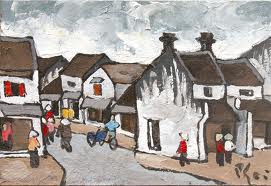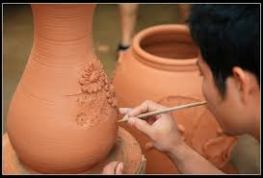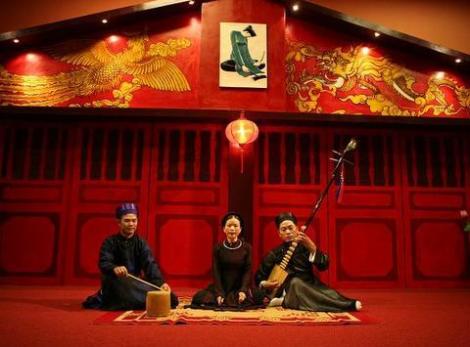
After the restoration of peace, Tran Van Can produced a canvas retying the rope of the irrigation scoop, which was a creation of high professional level he had long mastered. Duong Bich Lien looked at things in a global way; he brought landscapes and scenes to the level of symbols. In his canvas Harvest, the author has simplified to the utmost the scene of harvest: only golden waves succeeding one another to the horizon.
Nguyen Do Cung who was a veteran graduate of the FACI has made an oil painting, the machine building workers in 1962. He spent a rather long time at the engineering factory of the Cam Pha mines, living and working with the workers. Piles of documents, drawings, and sketches were prepared for this painting depicting a nascent large-scale industry of the country if one pleads for a “painting reflecting the individual” likes Vlaminck – a French painter in the early 20th century – Bui Xuan Phai has been able to materialize this conception.
It suffices to admire his paintings to realize that Bui Xuan Phai was in a state of mind heavy with past memories, that he took the past as a source of inspiration. Bui Xuan Phai was a veteran painter but he began to win public attention from the 1970s with his works on the old streets of Hanoi. He had recourse to bright colors and stylized forms in black outlines, like a glass panes of a window.
He has contacted with the works of Rouault. Toulouse-Lautrec and painters of force and rapidity has given influence which he applied to his paintings, adding the flavor of the old streets of Hanoi to that of modern time.
Many young painters have received his influence and he is considered as one of the four most talented artists of our time. Over two decades 1970s and 1980s, it seemed that oil painting did not surpass that of the first year after the restoration of peace to respond to the demand of socialist realism.
It is easy to understand when many good oil painters had chosen pumice lacquer or silk painting. Since 1925, oil painting in the poetical realist painting has acquired solid traditions and made continuous development, contributing many art works of value to the revolutionary painting.


